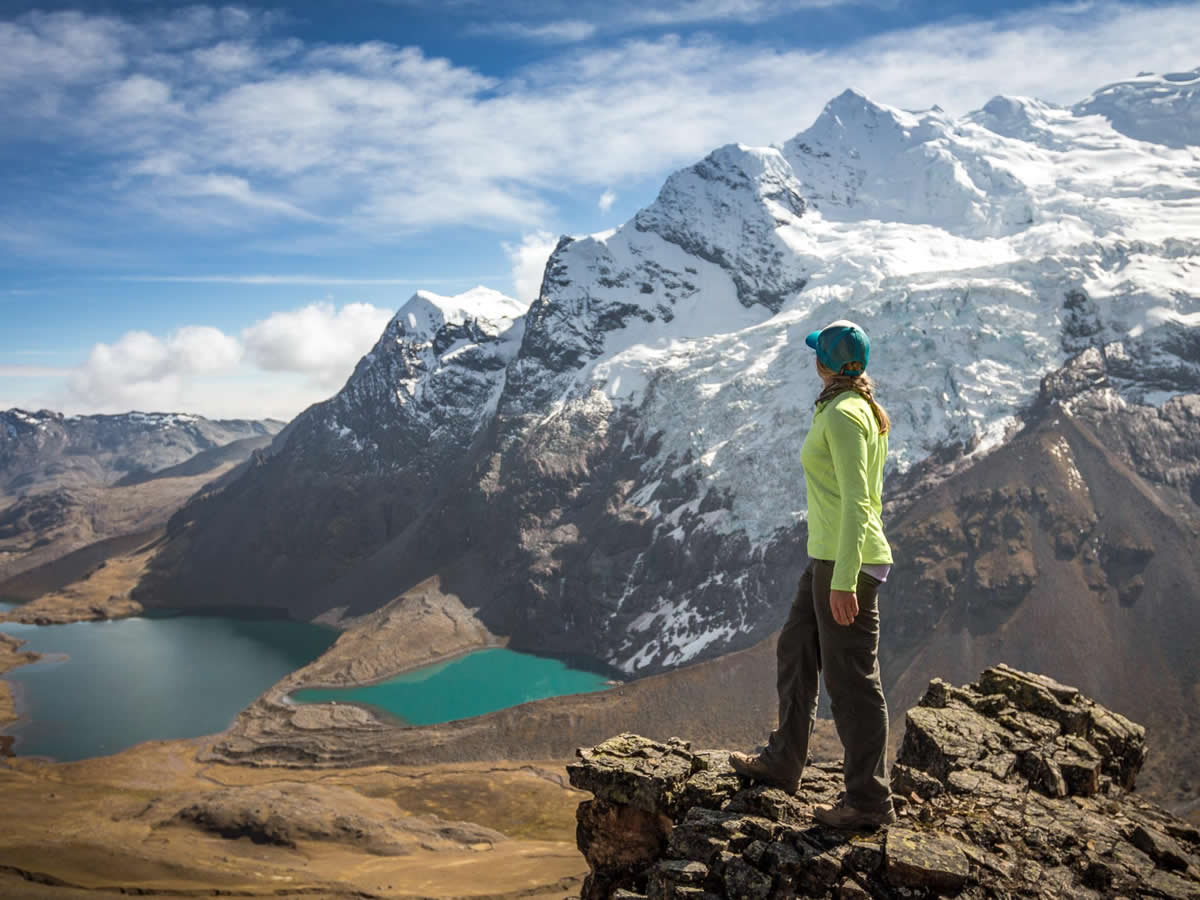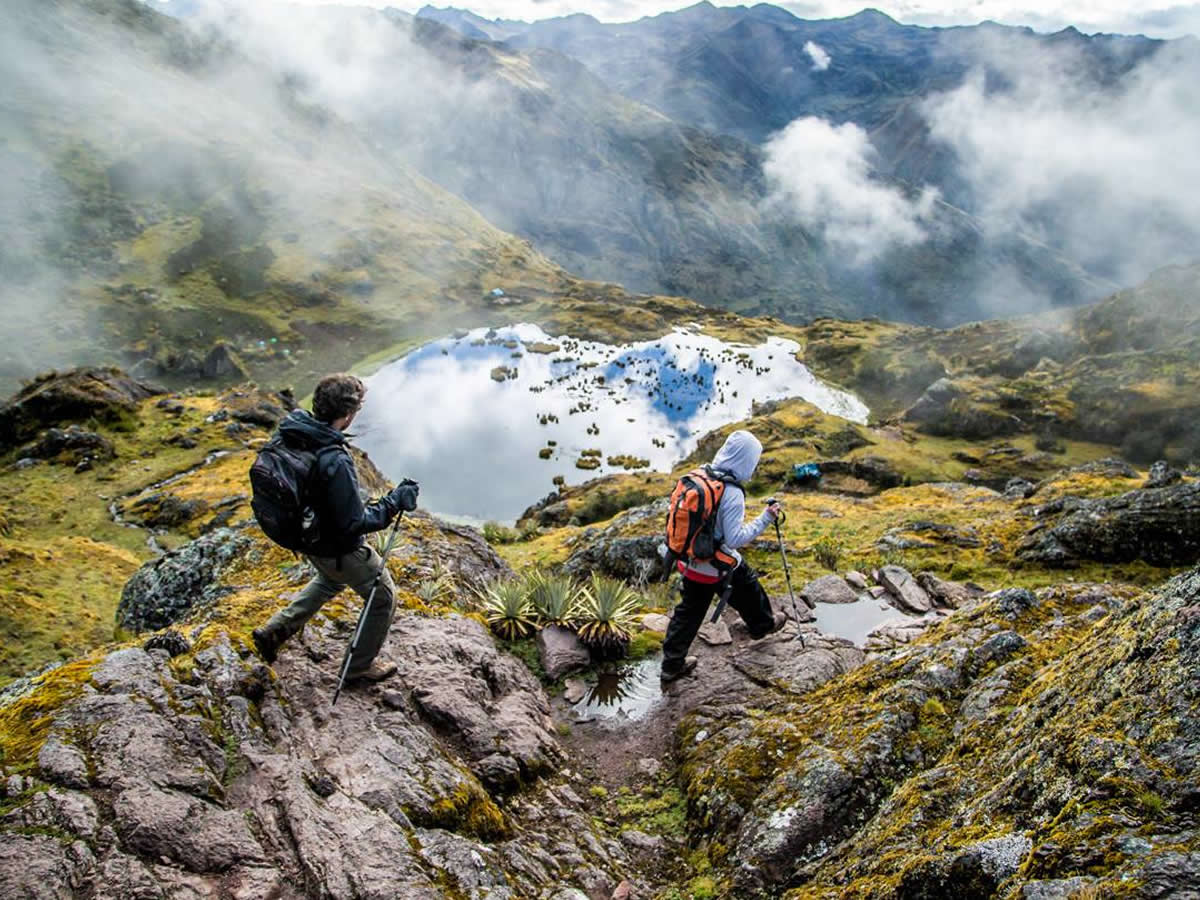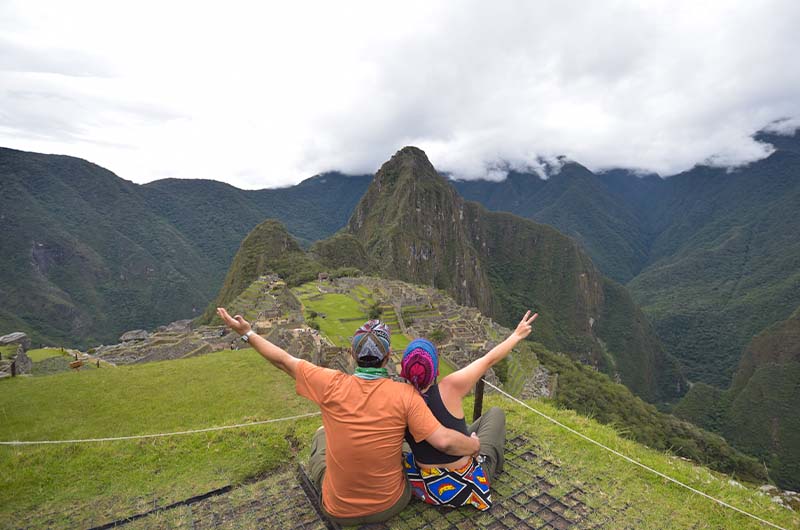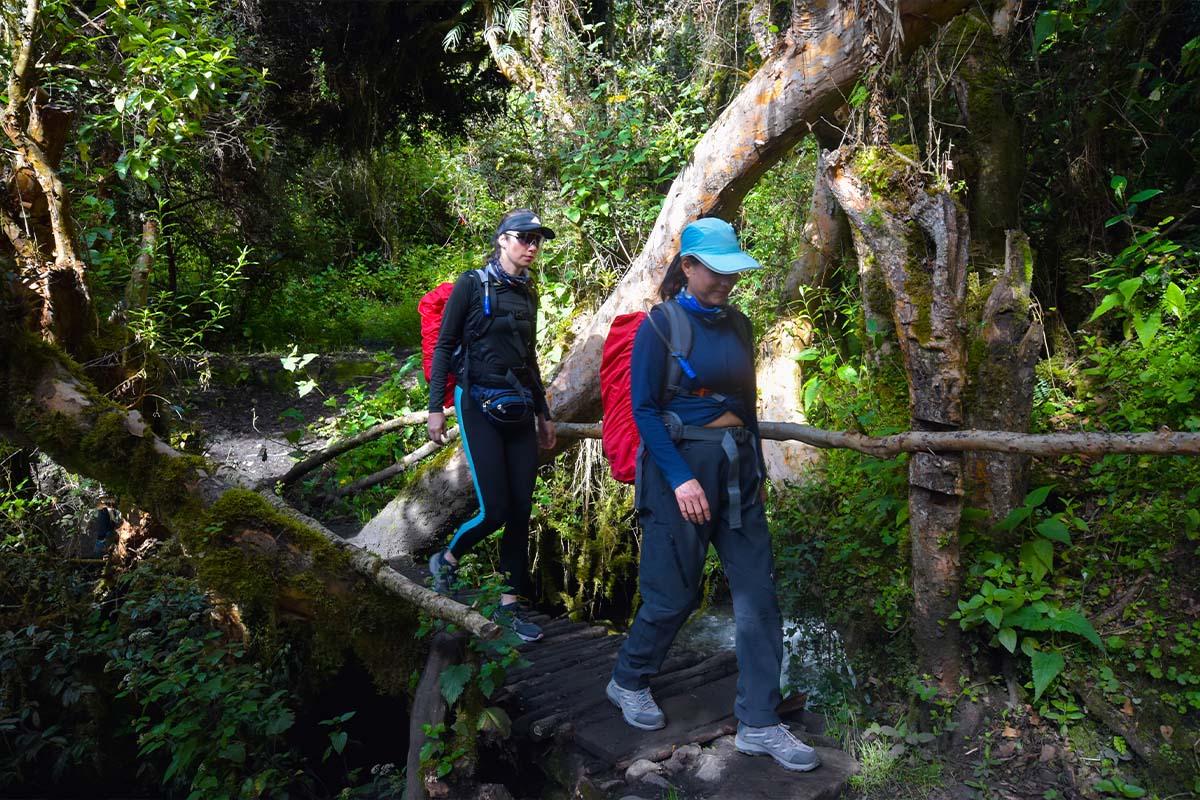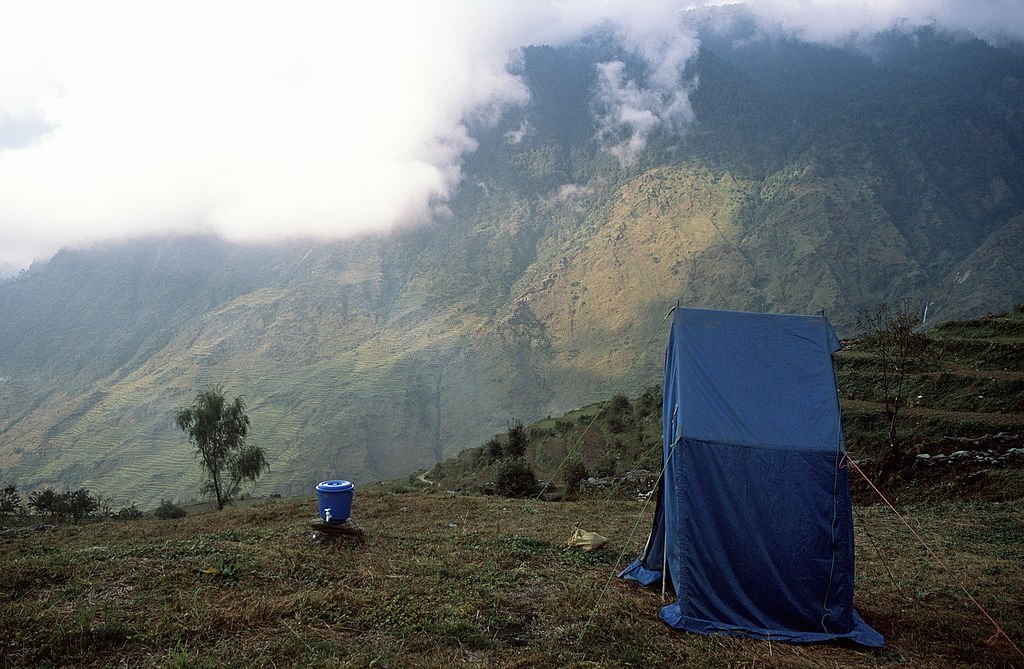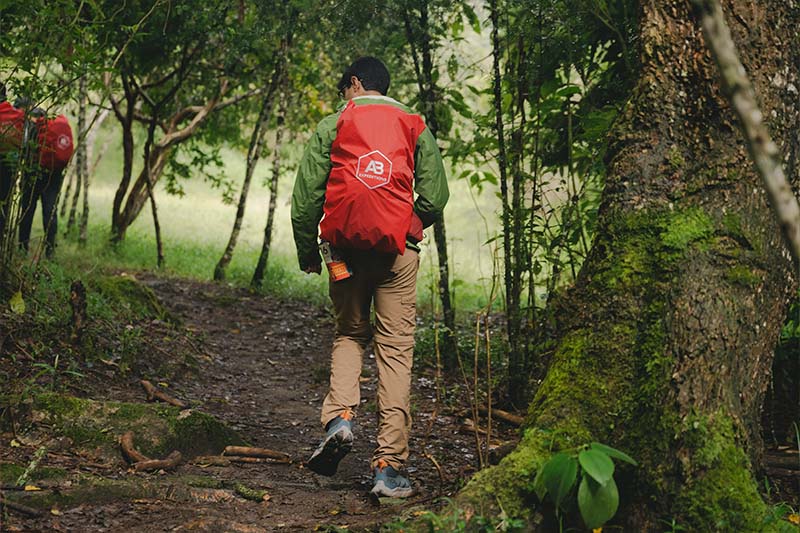Inca Trail Wildlife
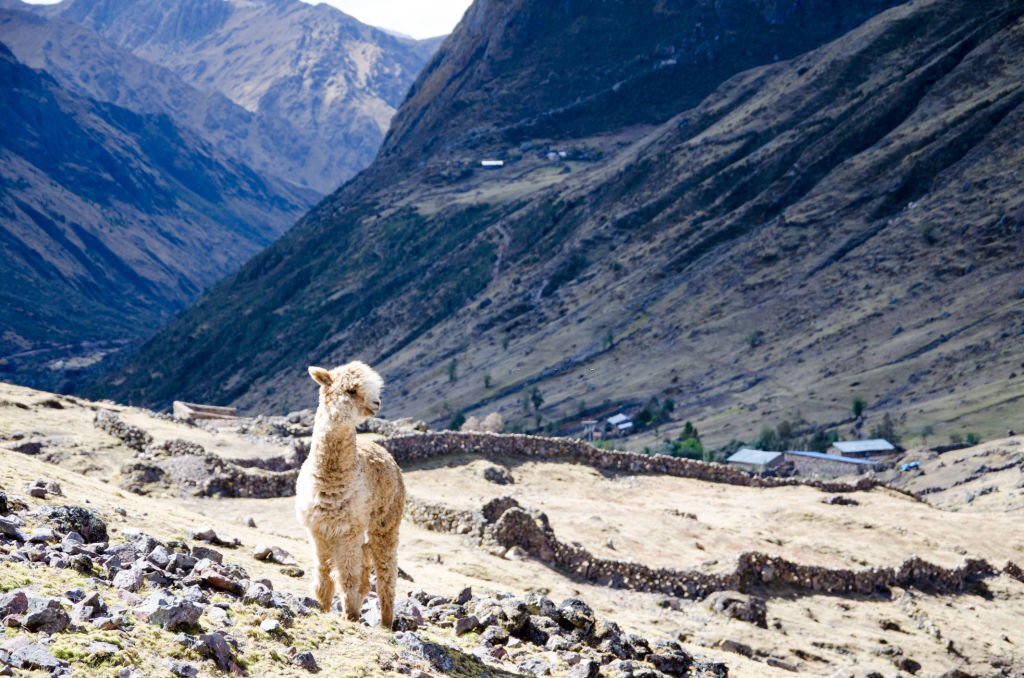
The Inca Trail to Machu Picchu is more than just a trail. It is a journey through a diverse and vibrant ecosystem. From the majestic condors that take to the skies to the tiny frogs that inhabit the cloud forests, the Inca Trail is home to a wide variety of wildlife.
Whether you are an experienced hiker or simply interested in learning more about wildlife, this information will be useful on your trip.
On the Inca Trail, it is common to spot llamas and alpacas, two emblematic long-necked animals that have become symbols of the Andes. Occasionally, you can also spot its wild cousin, the vicuña.
In addition to these species, there is a lesser known fauna that includes spectacled bears, viscachas and chinchillas. Although spotting them requires some luck and effort, they are not particularly elusive.
We’ll first explore Andean domestic animals and then mention some other species you might encounter, along with some special birds worth looking for.
ANIMALS YOU CAN SEE ON THE INCA TRAIL
SPECTACLED BEAR
Spectacled bears, scientifically known as Tremarctos ornatus, are solitary and secretive animals, so it is essential to exercise caution when observing them. If you encounter one on the Inca Trail, it is crucial to keep a safe distance and refrain from approaching the animal. In addition, it is strongly recommended not to feed or disturb them. These bears are most likely to be found in specific areas such as Phuyupatamarca (at 3,650 meters above sea level) and Wiñaywayna (at 2,650 meters above sea level). The best time to see them is during the dry season, which runs from May to October, since during this period they are usually more active during the day and are less likely to be found in dense vegetation that makes it difficult to spot them.
It is important to remember that the natural habitat of spectacled bears is cloud and humid forests, and that they are omnivorous animals that feed on fruits, bromeliads and insects.
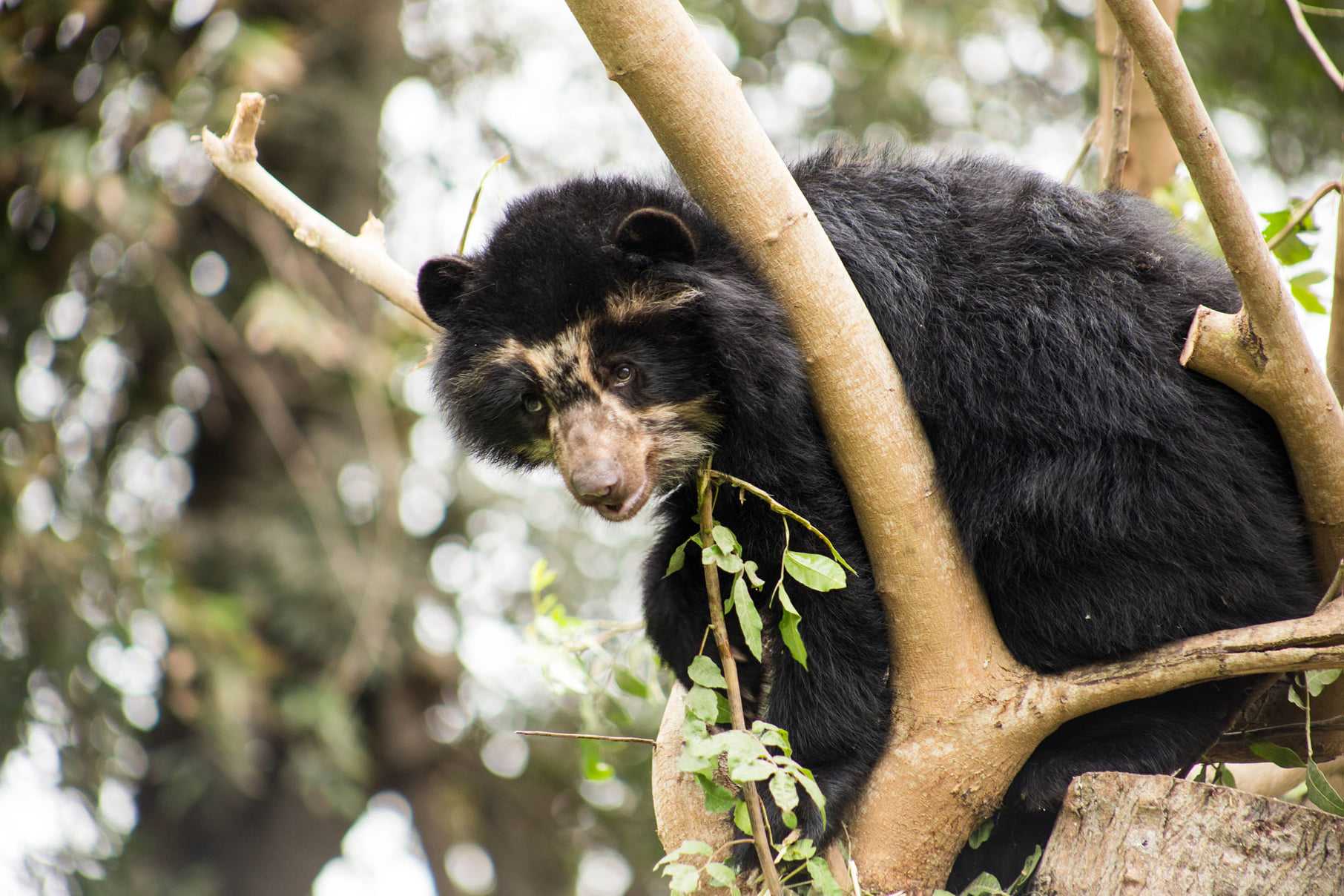
ANDEAN CONDOR
The majestic Andean condor (Vultur gryphus) can be spotted both on the Inca Trail and at Machu Picchu, providing exceptional opportunities to admire these emblematic birds of the Andes. The higher sections, such as Abra Malaga (at 4,316 meters above sea level), Warmiwañusca Pass (at 4,200 meters above sea level) and Phuyupatamarca (at 3,650 meters above sea level), offer greater chances for sightings.
The best seasons to observe the Andean condor are during the dry season, which runs from May to October. During this period, it is advisable to be located near mountainous areas with valleys and ravines to increase the chances of sightings. It is essential to show respect for these birds and their environment, avoiding disturbing or feeding them. Contributing in this way to their conservation is of vital importance.
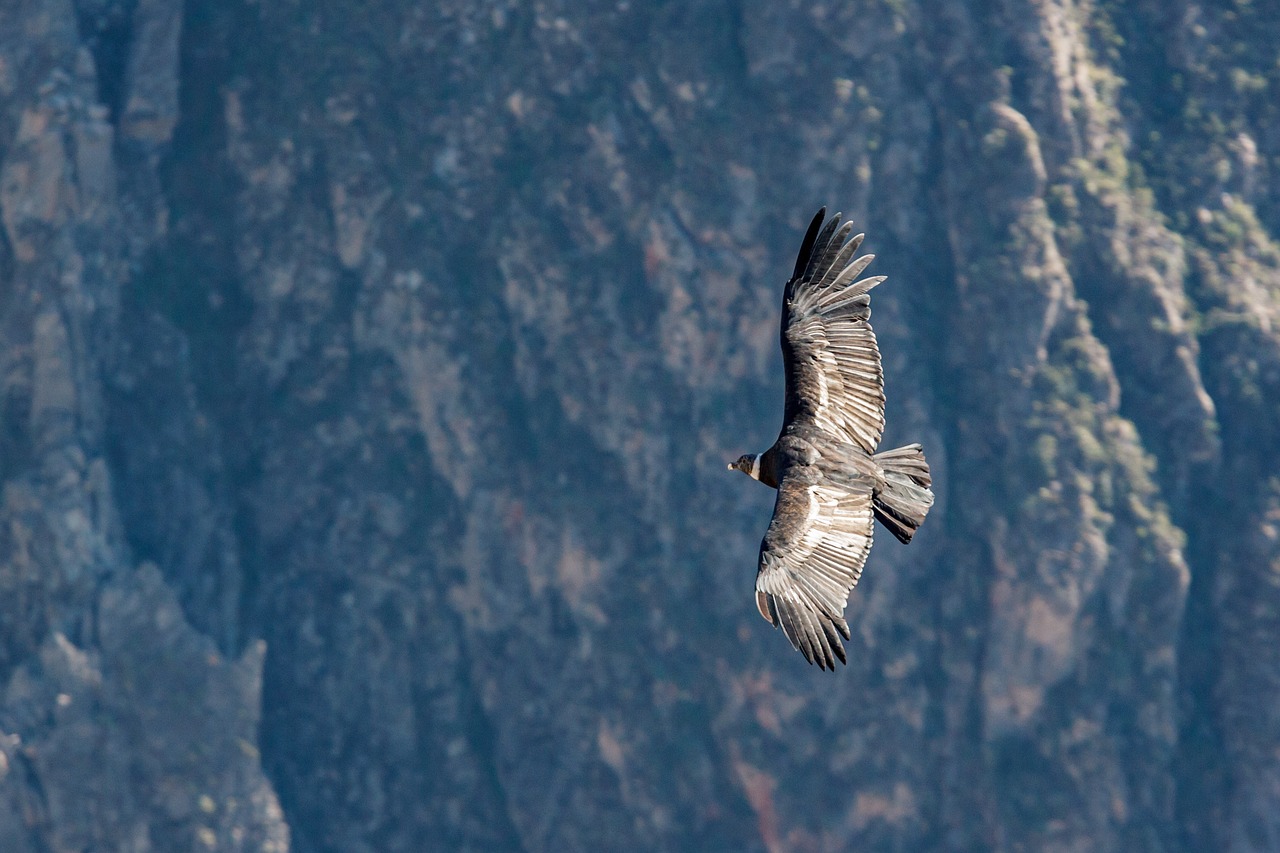
ANDEAN PUMA
Sighting the Andean puma (Puma concolor) in the mountainous areas of the Inca Trail and Machu Picchu is a rare experience. These felines are solitary, territorial and extremely stealthy, tending to avoid human contact. With mostly nocturnal habits, they show high activity during the night and tend to frequent areas of difficult access, preferring remote and rugged areas.
Encountering an Andean puma in its natural habitat would be an extraordinary event. In case you are fortunate enough to witness one, it is crucial to keep a respectful distance and refrain from disturbing it. It is important not to try to feed it or approach its young. Simply enjoy the magical moment of observing this majestic feline in its natural environment.
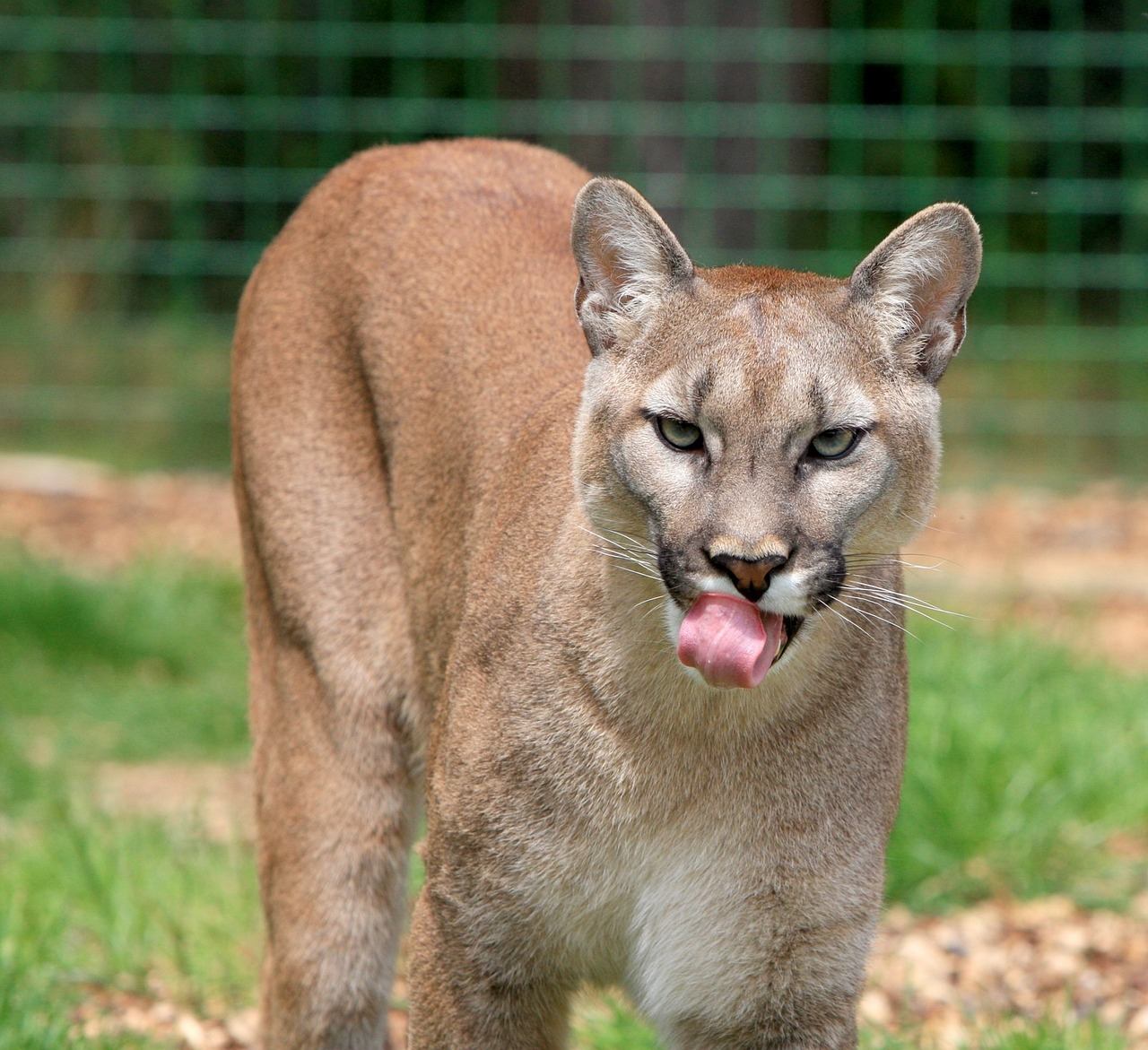
COCK OF THE ROCK
The cock-of-the-rock (Rupicola peruviana) belongs to the family Cotingidae and is known for its colorful plumage and peculiar behavior. This medium-sized bird has a robust body and a short tail. Males exhibit a striking red color and a prominent crest on the head, while females have brownish tones and a more discreet crest.
This charming bird is most likely to be seen in cloud forests, especially in areas such as Phuyupatamarca (3,650 meters above sea level) and Wiñaywayna (2,650 meters above sea level). The best times to observe them are during the rainy season (November to March), when the males show greater activity and more colorful plumage due to the mating period. Watching the cock of the rock on the Inca Trail or at Machu Picchu is a truly fascinating experience. Their vibrant colors and unique behavior will undoubtedly captivate you.
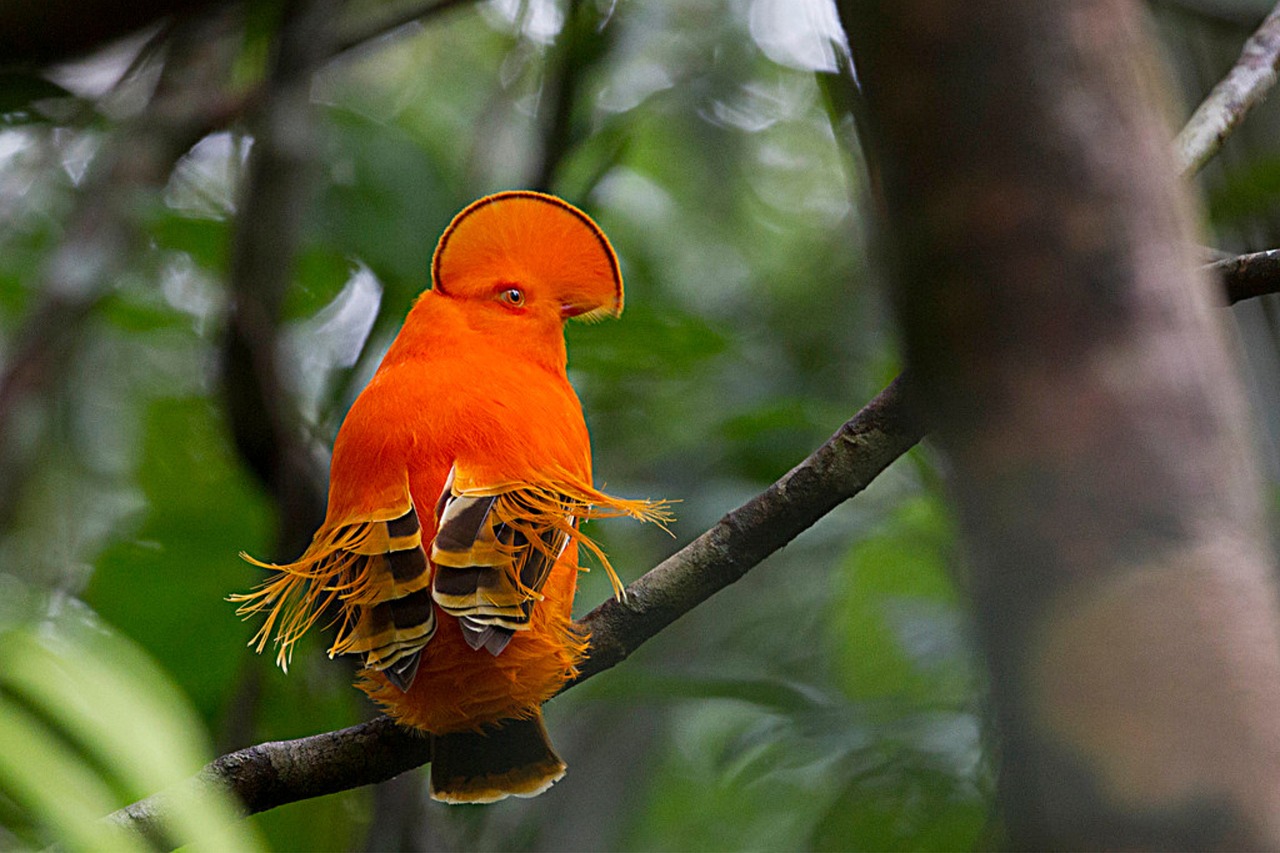
LLAMAS
These animals are quite common in these areas. Did you know that they were domesticated by the Incas thousands of years ago and are still used today as pack and transport animals? They are charming creatures that are much easier to spot during your tour, so if you haven’t had the chance to see them yet, just ask your guide where you are likely to find them.
You may spot them along the trail, especially in grazing areas, base camps and rest areas. Generally, they are easier to spot in the early morning or late afternoon, in areas with meadows and pastures. These animals are docile and friendly, which will allow you to establish a special connection with the Andean culture.
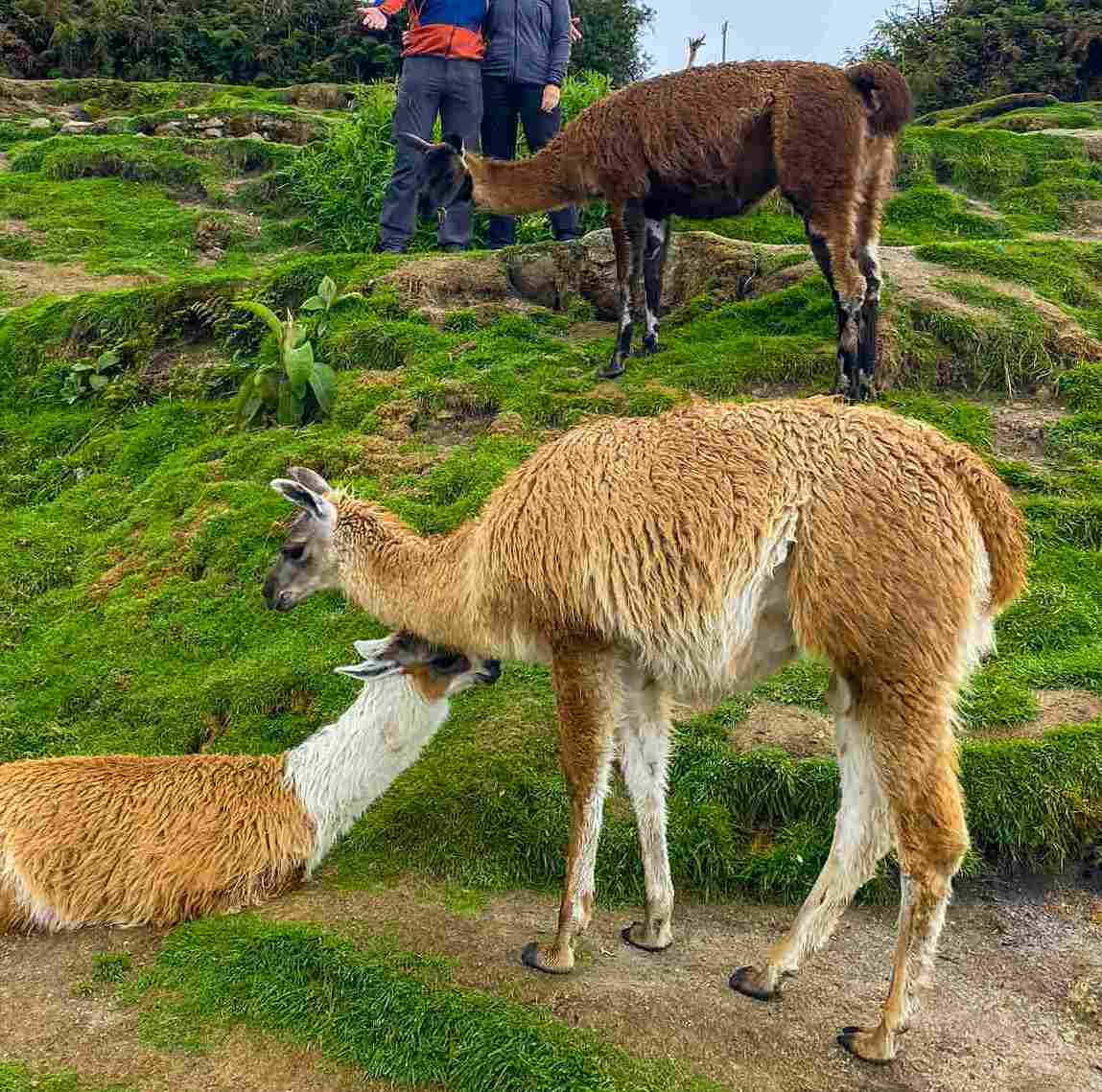
ANDEAN DEER or TARUCA
Andean Deer, also known as Taruca, are majestic creatures that make their home in the towering mountains of the Andes, with their habitat including areas near the Inca Trail and Machu Picchu. Equipped with a shy and vegetarian nature, it is common to see them grazing in open meadows or close to forests during daylight hours.
For those who wish to spot these charming animals, the dry season, from May to October, presents the best opportunity, since during this period they are more active and the vegetation is sparser, making them easier to observe. Local guides are experts in identifying the best places to spot Andean Deer and can offer valuable help in this regard.
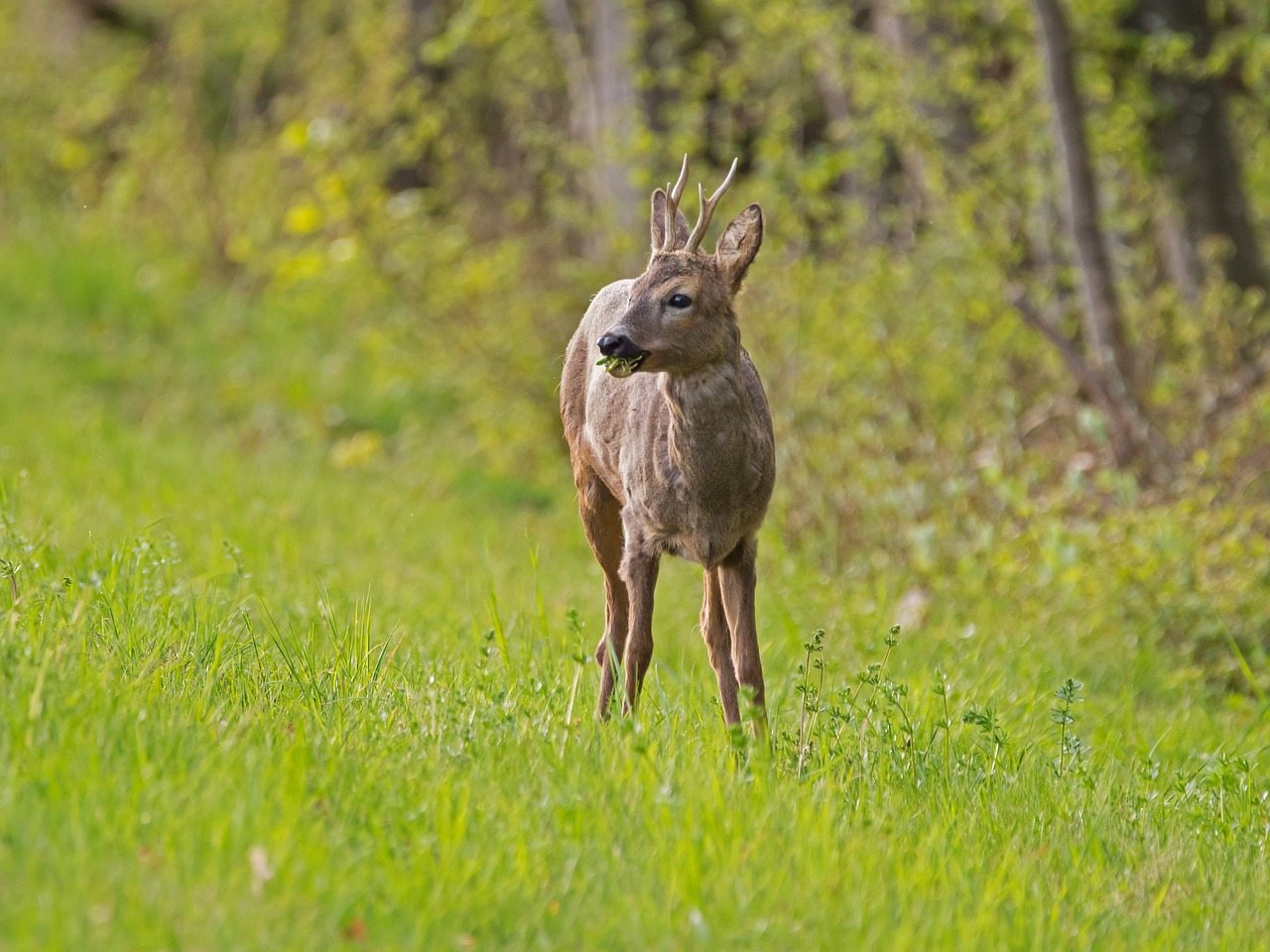
ALPACAS
Alpacas were domesticated millennia ago by the ancient Incas, who valued their extraordinary wool, softer and warmer than that of sheep, as an invaluable treasure in the high and cold Andean regions. These adorable animals are close relatives of llamas, but smaller in size and with an even finer coat.
They are most likely to be found in grazing areas or in resting areas along the road. The best time to spot them is during the dry season (May to October), when green areas with grasslands and low plants are more abundant. Your guide can be of great help in locating them. Remember to enjoy their presence in a responsible manner, thus contributing to the conservation of their habitat and traditions.
Frequently asked questions about Wildlife Inca trail
Are there venomous snakes on the Inca Trail trekking paths ?
When trekking the Inca Trail, you will be at much lower altitudes than in Cusco. Most snakes cannot survive in cold temperatures, so if you are trekking at lower altitudes, the climate will be warm in some unique spots, and those locations will be shaded by the sun, which is ideal conditions for snakes.
Let’s get to the point. Are there venomous snakes on the Inca Trail trekking paths ?
There are venomous snakes on the Inca Trail, although you are unlikely to encounter them. They would rather stay out of people’s way. They will not attack you if you do not irritate them.
How can I avoid being bitten by snakes when hiking or camping?
Leaving a snake alone is the greatest method to prevent being bitten by it. The majority of snake bites occur when the snake is moved or irritated. Even if you use a stick or rocks to move the snake, irritating it is the quickest way to encourage a bite. While these activities may appear to be innocent, they are quite dangerous to the snake. All they see is a giant predator pursuing them, and if they fear their lives are in danger, they will engage in all protective responses, including biting. Back away from a snake on the route until you are a safe distance away.
What should you do if you are bitten by a snake?
You must first be calm and not be afraid.
If possible, photograph the snake from a safe distance. Identifying the snake might aid in snakebite treatment.
Inform your tour guide also trek companions.
Do not use alcohol as a pain reliever.
Do not apply ice to the wound or submerge it in water.
Soap and water should be used to clean the bitten site.
Apply a clean, dry dressing to the bite site.
Is the Inca Trail home to any other deadly wild animals?
Pumas- formerly frequented the area, but their number has declined dramatically over time, pushing them further out into more distant locations. Even in locations where they can still be found, they rarely attack humans. We have yet to receive reports of pumas on the Inca Trail.
Spectacled Bears – can be observed on the Inca Trail on rare occasions, however they do not assault people. They eat mostly vegetables. Although
There is film evidence from 15 years ago showing them roaming about inside the ruins of Machu Picchu one morning, you are unlikely to encounter them up close.
Most wild animals are afraid of people because they see us as a threat. Seeing one is a the finest rather than a source of concern. If you come across a wild animal, we recommend that you remain silent and avoid approaching it.
